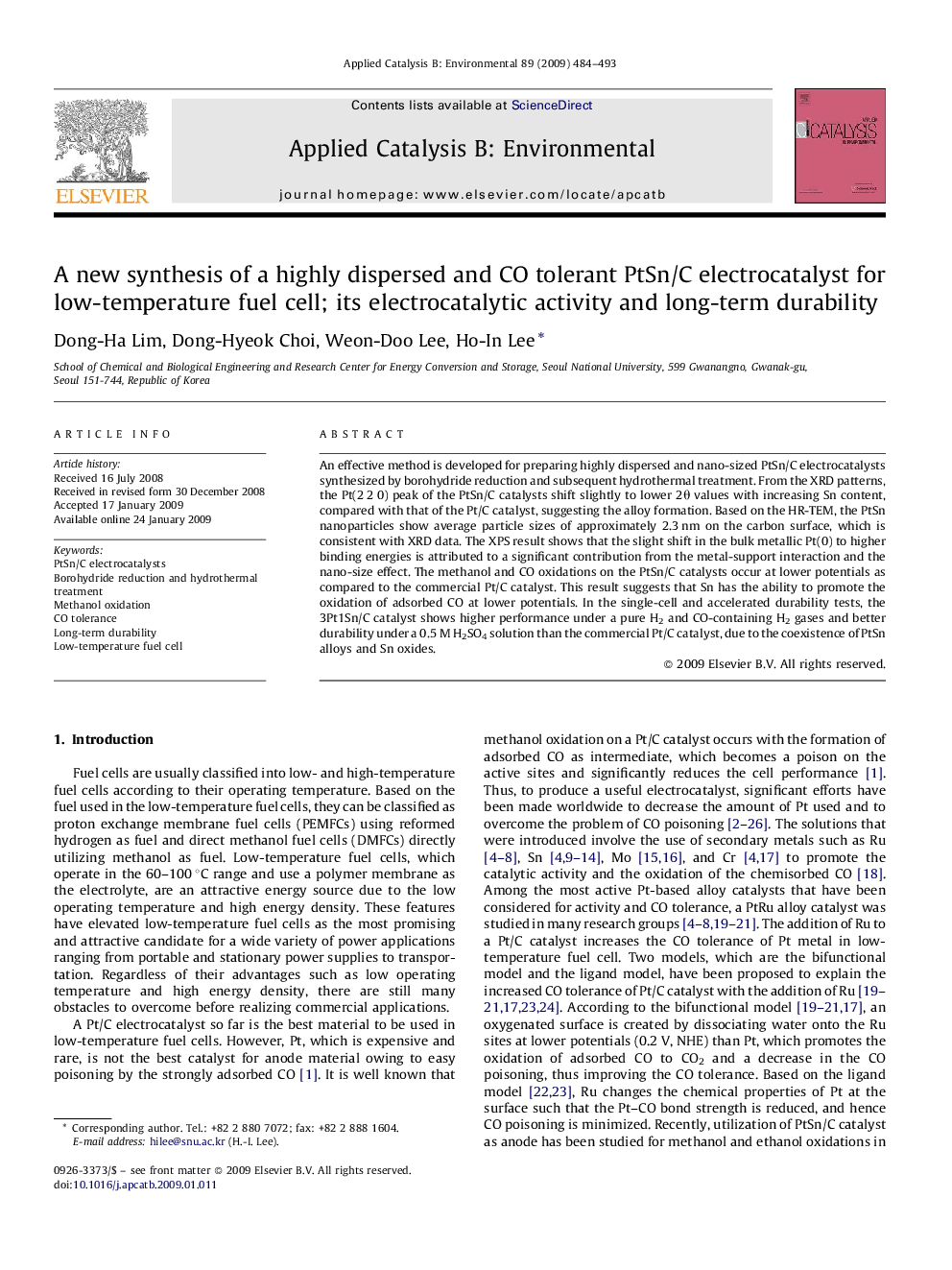| Article ID | Journal | Published Year | Pages | File Type |
|---|---|---|---|---|
| 47800 | Applied Catalysis B: Environmental | 2009 | 10 Pages |
An effective method is developed for preparing highly dispersed and nano-sized PtSn/C electrocatalysts synthesized by borohydride reduction and subsequent hydrothermal treatment. From the XRD patterns, the Pt(2 2 0) peak of the PtSn/C catalysts shift slightly to lower 2θ values with increasing Sn content, compared with that of the Pt/C catalyst, suggesting the alloy formation. Based on the HR-TEM, the PtSn nanoparticles show average particle sizes of approximately 2.3 nm on the carbon surface, which is consistent with XRD data. The XPS result shows that the slight shift in the bulk metallic Pt(0) to higher binding energies is attributed to a significant contribution from the metal-support interaction and the nano-size effect. The methanol and CO oxidations on the PtSn/C catalysts occur at lower potentials as compared to the commercial Pt/C catalyst. This result suggests that Sn has the ability to promote the oxidation of adsorbed CO at lower potentials. In the single-cell and accelerated durability tests, the 3Pt1Sn/C catalyst shows higher performance under a pure H2 and CO-containing H2 gases and better durability under a 0.5 M H2SO4 solution than the commercial Pt/C catalyst, due to the coexistence of PtSn alloys and Sn oxides.
